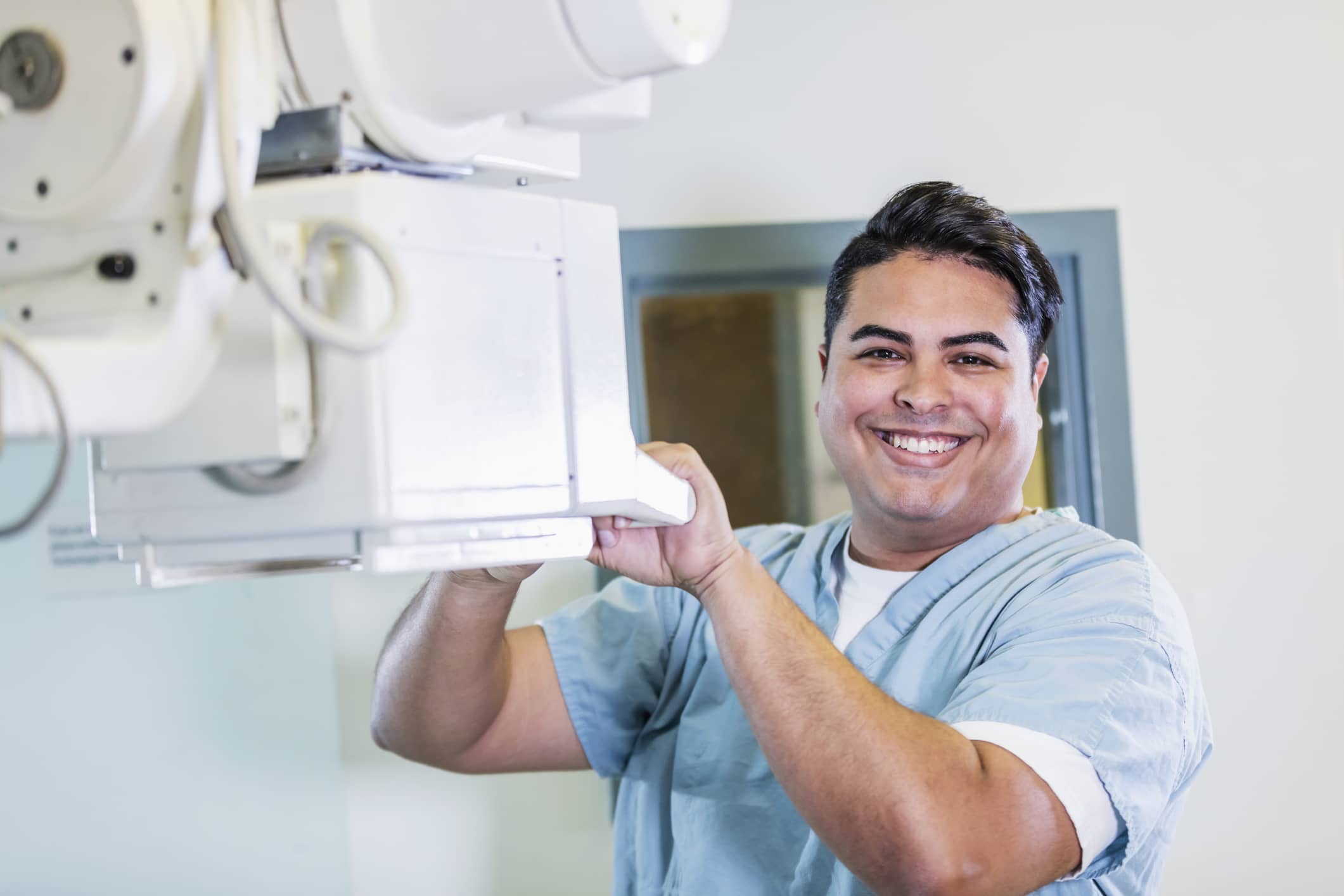
An In-Depth Look at a Cath Lab
According to Slicker et al., more than one million cardiac catheterizations are performed each year in the United States. During these procedures, interventionists rely on cath lab technicians to monitor ECG readouts and report anything out of the ordinary. Cath lab technicians also educate patients about cardiac catheterization and perform prep activities such as cleansing the skin and administering local anesthesia. Because this type of work is highly specialized, many hospitals struggle to fill openings in the cath lab, creating plenty of opportunities for technicians who are willing to travel. Learn more about what it's like to work as a cath lab technician with this in-depth look at a cath lab.
INSIDE THE CATH LAB
Most cath labs have the same basic equipment, but some hospitals have labs equipped with cutting-edge technology that isn't available everywhere. The most common pieces of equipment include an X-ray source, a video screen to monitor the heart and machines used to record the patient's vital signs. At the Mayo Clinic, interventionists have access to a computerized magnetic guidance system that helps them be more precise when threading catheters and guidewires through the blood vessels.
CATH LAB PERSONNEL
Cath lab technicians must feel comfortable working in a team environment, as nurses, technicians and physicians must work together during every cardiac catheterization. Staffing ratios vary by facility, but it's not unusual to have two nurses and at least one technician on the team. The nurses share responsibilities, such as handling instruments and monitoring patients, while the technician is responsible for activities such as prepping patients and documenting what happens during each procedure. If the hospital is known for handling complex cases, the team is likely to have even more nurses and techs.
The cath lab team also includes an interventionist, who is a physician with experience performing diagnostic and interventional procedures on the heart and blood vessels. In some facilities, the team has a certified registered nurse anesthetist to administer pain medication to patients.
Visit AMN Healthcare to search for cath lab job openings and learn more about working as a travel cath lab technician.
WORKING CONDITIONS
Because cath labs are used for activities such as inserting pacemakers and introducing catheters into the blood vessels, they must be as clean as possible. As a result, a cath lab looks much like a traditional operating room. Interventionists, nurses, technicians and other personnel use aseptic techniques to protect patients from hospital-acquired infections and prevent contamination of medical supplies and instruments.
In an article for Cath Lab Digest, Alnettia W. Johnson explains that everyone working in the cath lab should follow 10 basic principles of aseptic practice. These principles include wearing gowns and gloves, creating a sterile field as close as possible to the start time of the procedure and only using sterile items within the sterile field.
Cath lab technicians spend much of their time standing. Depending on how the cath lab is set up, the job may also require frequent bending and reaching. In some cases, it may be necessary to assist other team members by lifting heavy equipment or helping reposition patients. Anyone with an interest in this role should also be aware of the requirement to wear a lead apron while X-ray equipment is in use. This role also requires some sitting, especially while completing required documentation before and after each procedure.
JOB REQUIREMENTS
Education and certification requirements vary by hospital, but most facilities require an associate's degree or a bachelor's degree in nursing, natural science or a related subject. Obtaining the Registered Cardiovascular Invasive Specialist credential can help a cath lab technician qualify for more opportunities, especially in a competitive market. To sit for the RCIS exam, a candidate must meet the minimum education requirements established by Cardiovascular Credentialing International. Candidates are also required to submit supporting documentation, such as educational transcripts, clinical verification letters or employment verification letters. The RCIS credential indicates that an applicant has the knowledge needed to perform pre-procedure activities, assist with diagnostic and interventional procedures, respond to patient emergencies and conduct post-procedure activities correctly.

Working as a cath lab technician provides regular opportunities to make a real difference in the lives of patients with abnormal heart rhythms, coronary artery blockages and other conditions affecting the heart and blood vessels. Travel tech positions are especially rewarding due to the high pay and opportunity to see how different hospitals operate their cath labs.
Search Allied Jobs in Your Specialty Now
Additional Allied Travel Resources
While you continue your search for the perfect allied healthcare position, AMN Healthcare provides great resources to keep your career moving in the right direction. Begin the application process now, and then learn more about how AMN Healthcare can help you keep your career on the move.
- EAP: Our allied travelers gain access to a valuable set of Employee Assistance Program benefits.
- Allied Travel Jobs by Specialty: Explore allied jobs and learn about hourly salaries and the benefits of working in travel jobs.
- Search All Allied Jobs: Uncover new possibilities in your allied career by exploring both short and long-term options.
- Allied Healthcare Jobs: Learn how we can help move your career in amazing directions, both professionally and geographically by exploring opportunities by each state.
- More Allied Resources: Use the content here to learn everything you need to know about our allied recruitment process, including information on salary and benefits.
Latest News
Radiology Tech Salary vs. Other Imaging Roles: Who Comes Out on Top?
How does radiology tech salary compare to sonography or MRI tech pay? Explore salary insights for imaging roles + find top rad tech jobs with AMN Healthcare.
PT School 101: What You Need to Know (and What No One Tells You)
Thinking about applying to PT school? Here's a candid look at what you’ll need to succeed—plus the insider info no one really talks about.
Preparing to Start Travel Therapy as a New Graduate
New grad PT or OT? Learn from AMN Travelers how to prepare for a career in travel therapy, from maximizing your clinicals to finding the right recruiters and mentorship to support your journey.
How Travel OTs Can Stay Up to Date with Industry Trends
Discover how travel OTs can stay updated with industry trends, grow professionally, and find the best paying OT jobs. Strategies for success in 600 words.
Top Challenges Travel SLPs Face and How to Overcome Them
Discover the top challenges travel SLPs face and how to overcome them. From documentation to patient engagement, take control of your SLP career today!
How to Nail Your First Patient Visit: Travel PT Edition
Effective tips for travel physical therapists on their first patient visit. Learn about preparation, assessments, and top travel therapy companies for PT jobs.











